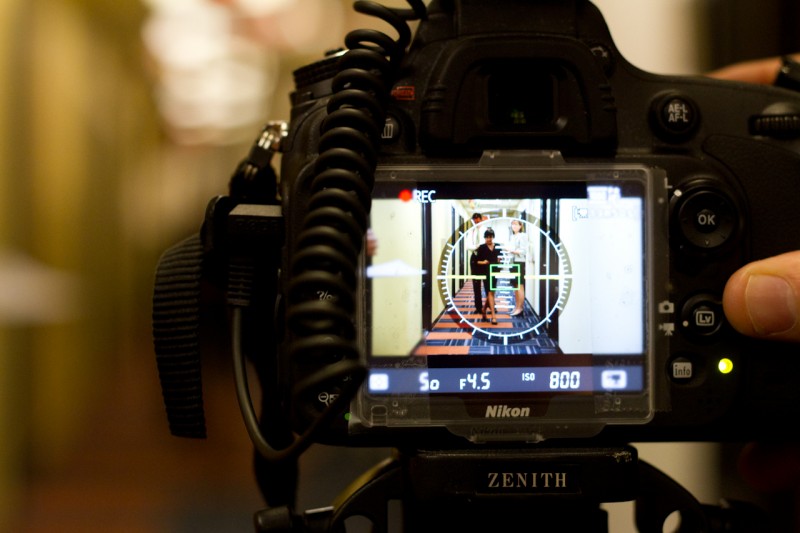
Movies maintain illusions, illusions you might take for granted.
The process of putting a movie on screen is probably not as romantic or funny as the movie itself. Most likely, it is far more stressful.
What you see playing in the cinema is not reality, but a whole production of writing, scheduling, recording and editing.
In the second Campus Movie Fest event to take place at UNF, teams competed to make five minute movies in a week. Winners will get the opportunity to travel to Los Angeles, gain exposure and attend workshops as well as having their movie played to select audiences.
A movie can take months to plan and prepare, but teams in CMF funnel the shooting and production into seven days of insane, stressful, but fun and ultimately rewarding work.
During the week of production, The Spinnaker observed one of the crews that went to LA for its creation last year. The crew was intent on returning to the red carpet this summer, and ended up doing very well in the March 6 CMF finale at UNF, winning best story, audience choice, best actor and best picture.
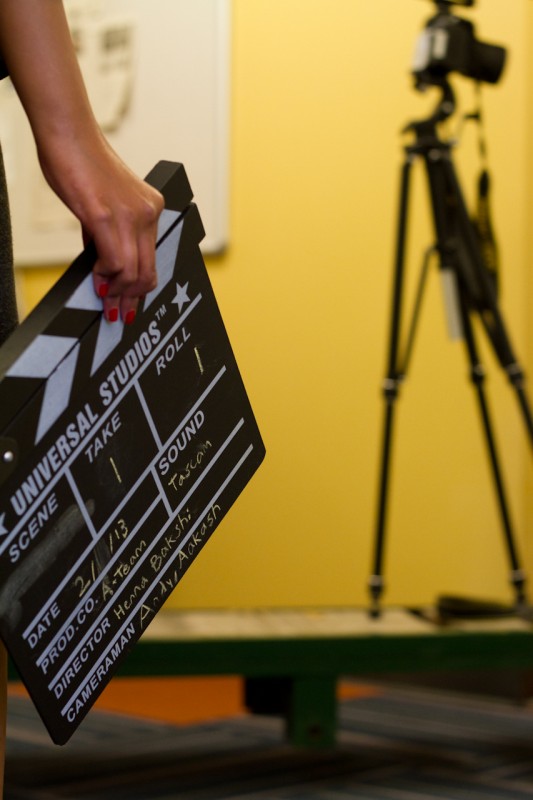
Quiet on the set
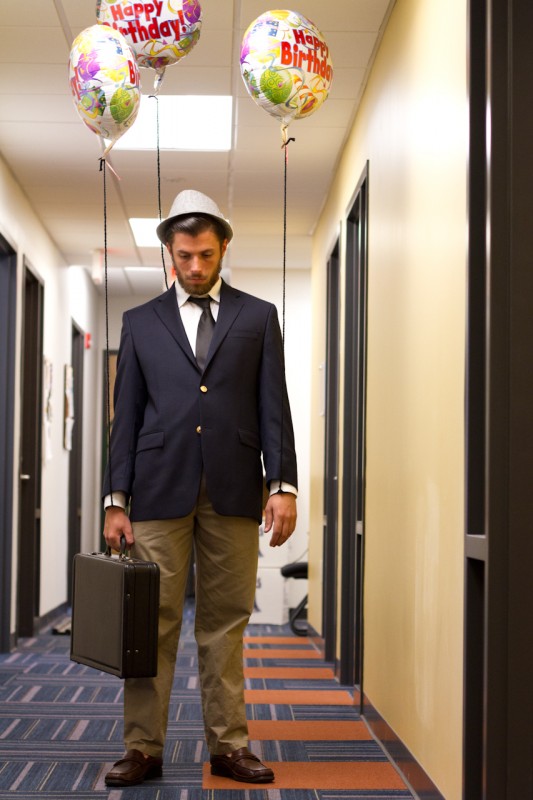
It’s Feb. 21, the first day of UNF’s Campus Movie Fest, and a hallway in the communication building is no longer an office, but a busy movie set.
Three “Happy Birthday” balloons strung to a young man jostle in the air four feet above him. He is dressed sharply, white pressed shirt, hair styled dapperly. His name is Alex Mross, a UNF journalism junior, and he is playing the protagonist in this production, titled Strings.
Mross’ experience in movie making is limited.
“This is my first time doing something like this” Mross says.
Henna Bakshi, the director, bustles from room-to-room of the set, instructing and giving orders.
“Ever since the trip to LA we have been planning and thinking about this week,” Bakshi says.
She is excited and nervous. This is the first day of shooting for the movie, the day where the pace of the production is set.
The film is set in the 1950’s. Mross’s “office” has several period props, including fake a calendar and fake cigarettes. The only operational device in the room other than the camera is the typewriter.
Andy Leverett, the movie’s co-director, cinematographer and editor, is placing a camera on a tripod as he discusses shots
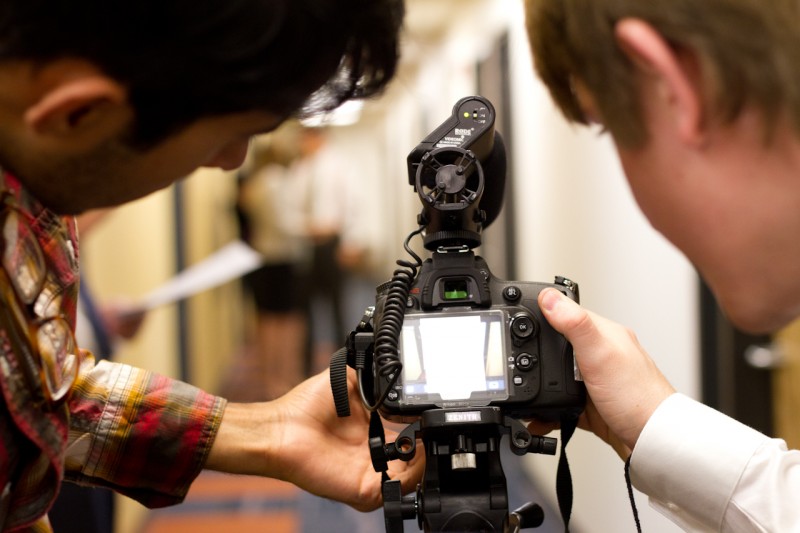
with Aakash Bakshi, UNF mechanical engineering sophomore, also working as cinematographer.
The room is dominated by tripods. On screen, however, Mross will be alone with thick black string rising from his wrists and neck to the balloons.
The dolly, a cart that allows for smooth sliding shots, rolls down the hallway. On it is a camera perched on top of a tripod and a lower level camera closer to the ground.
The cast gets over what looks like a fidgety, plateau of learning by the fifth take. They are becoming more natural, adjusting to an environment of cuts and repetition and becoming the roles they are playing.
Observing the process is like watching a toddler move from taking small steps to finding his own gait then finally running. It’s coming together.
“Look really smug,” Bakshi instructs one of the actors. He keeps in character between cuts, twirling a fake cigarette between his fingers.
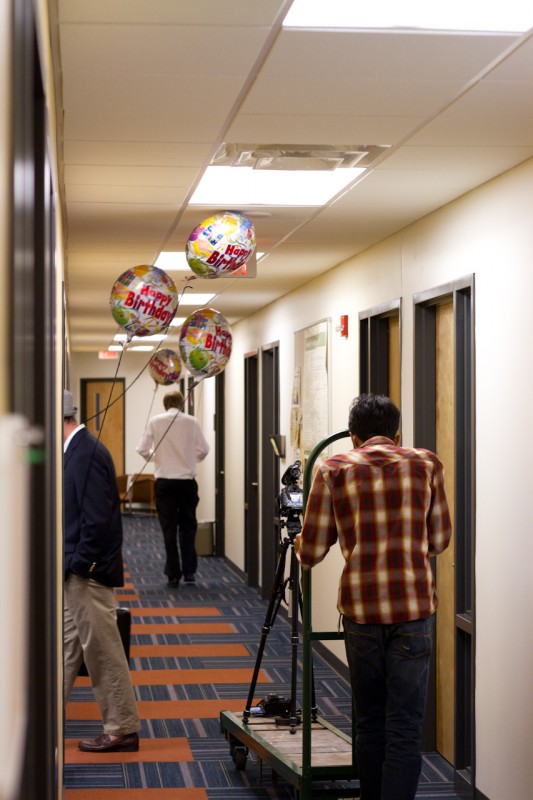
Unbeknownst to the Bakshi and Leverett, the actor has a digital watch on. They’ll have to do that take again in order to remain true to the time period. The first quartz movement watch wouldn’t be commercially available till 1969.
“Rolling, speed…action!” Bakshi says. She watches the screen, looking at how the shot is being composed.
Then, as the dolly rounds the corner, the tripod tips over.
The DSLR camera topples off of the dolly with a hard plastic thud. The microphone smacks a doorframe, dislodging from the camera.
The room falls silent.
Whatever free, playful energy was going on has been muted, indefinitely, while the crew inspects the equipment.
The plastic mount for the microphone is broken, but that is not all that needs to be fixed.
Spinnaker photo editor Randy Rataj, taking shots for this story, inspects the camera; the focus ring on the lens has been knocked loose.
With no camera rolling or lines flowing, the actors and extras stand by concerned and embarrassed with their fifties outfits and goofy birthday balloons.
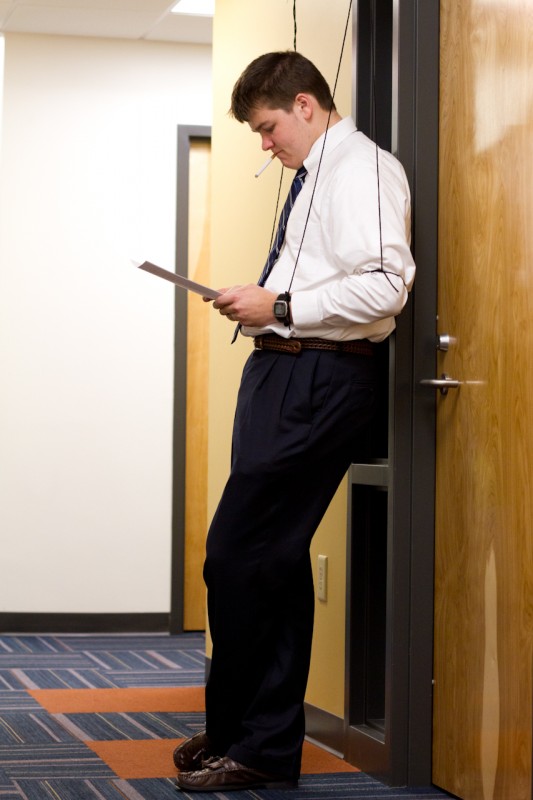
This is the first day of shooting for a week of staging, recording, and editing. Having a camera break this early in the process could endanger a production that has been in preparation for months.
Rataj gives a firm push to the focus ring, shoving it back into place.
“It should work, as long as the lenses aren’t cracked,” Rataj says.
Bakshi takes a test shot.
“Does it look like it’s working?” Leverret says.
Bakshi’s arms are closely crossed, and there is some major toe-tapping present among the cast.
“Yes, it’s working,” Bakshi says.
The birthday balloons visibly bob with everyone’s sigh of relief.
The actors move back to positions, adjusting and shuffling briskly.
There is a timetable to follow. Activities are scheduled to the minute. A movie production has begun and if it’s going to give a team the chance to go back to L.A., it must continue as planned, technical difficulties or not.
Bakshi takes a seat on the dolly, grasping the tripod mounted camera, she prepares to ride the dolly for however long it will take.
Rolling…
Email Jason Howard at reporter3@unfspinnaker.com
All UNF’s CMF productions can be watched online at http://www.campusmoviefest.com/festivals/384-the-university-of-north-florida
More behind the scenes pictures by Randy Rataj:








Manish | Jun 24, 2020 at 1:00 am
Very true, movies are like a part of life. Everyone watches movies. Movies like Extraction are a gem and it can be watched more than once easily.